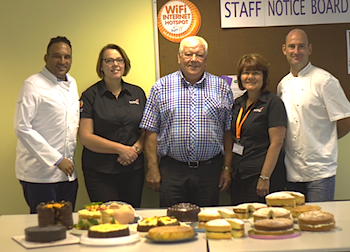Daisy Group has launched a new online hub as part of its Resource Centre, which offers support and guidance to growing businesses from some of the UK's most successful entrepreneurs and businesspeople.
The Inside Track has been developed by Daisy to cater for the growing demand from its customers and the business community for cross-industry information and guidance.
The initiative is in line with the CBI's (Confederation of British Industry) commitment to drive business growth.
The one-stop-shop resource incorporates pointers on a range of business topics from management and leadership, to technology and communications guidance.
The online platform features a range of articles from Daisy experts, including serial entrepreneur and Chief Executive Officer, Matthew Riley, on technology-related topics.
Guest contributors include: Patrick Gallagher, Chief Executive of CitySprint; Steve Smith, founder of the multi-million pound retail chain, Poundland; and Neil Westwood, one of Dragon's Den's biggest success stories and founder of Magic Whiteboard.
Daisy is also working with its own customers to share best business practice and suggestions through The Inside Track.
Daisy Group's Marketing Director, Kate O'Brien said: "Small and medium-sized businesses are critical to the UK's economic growth, and research has shown that the more clued-up businesses are, particularly during the first few years of trading, the more likely they are to thrive and grow.
"Daisy has an incredibly broad client base so we are in a perfect position to help businesses get to grips with the issues that can affect them, whether that relates to communications, IT or business management.
"The CBI shares our commitment to drive business growth so we are working together to foster a supportive and better informed business community."
Daisy has formed a close relationship with business lobbying group the CBI and supports its drive for more help to be given to businesses to support their growth into mid-sized enterprises.
?John Cridland, Director-General of the CBI, said: "Medium-sized businesses have some of the most potential to grow and create new jobs but to achieve that growth they often face new challenges, including around technology, financing, and exporting.
"These firms are time-pressed and don't always have the resources to go to consultants, so Daisy's business support hub will be a valuable platform where they can learn from the experiences of fellow business people."

 Sixteen bakers from South West Communications Group went head-to-head with a charity ‘cake-off' competition. The event was the latest leg of a year-long inter-departmental competition.
Sixteen bakers from South West Communications Group went head-to-head with a charity ‘cake-off' competition. The event was the latest leg of a year-long inter-departmental competition. Caines said: "A fantastic cake competition with some delicious cakes, although more impressive was the imagination and creativity that went into them. There was not a bad cake among them."
Caines said: "A fantastic cake competition with some delicious cakes, although more impressive was the imagination and creativity that went into them. There was not a bad cake among them." Wholesale connectivity provider ICUK has introduced a promotional campaign for resellers and wholesale partners in a bid to boost sales of new Ethernet leased line connections.
Wholesale connectivity provider ICUK has introduced a promotional campaign for resellers and wholesale partners in a bid to boost sales of new Ethernet leased line connections.